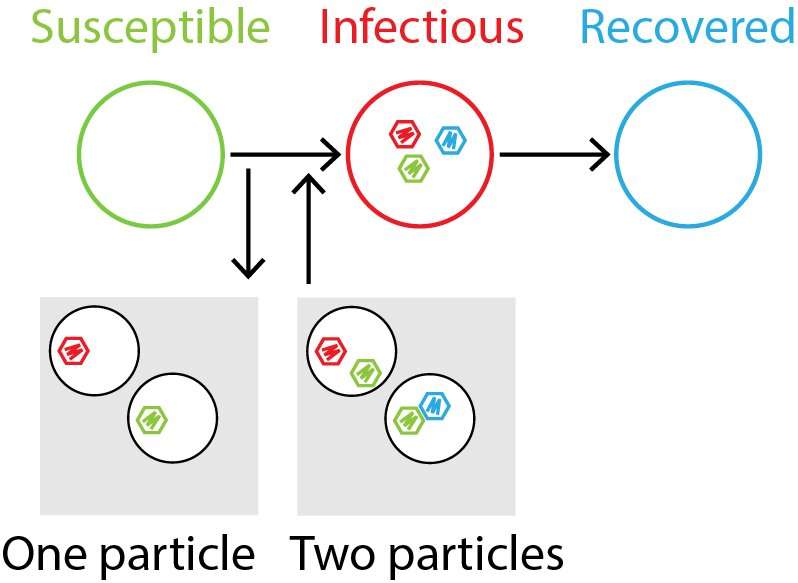Why multipartite viruses infect plants rather than animals

Neither living nor non-living, viruses are generally strange. Among viruses, multipartite viruses are among the most peculiar—their genome is not packed into many particles rather than one. Multipartite viruses primarily infect plants rather than animals. A recent paper by researchers from Tokyo Institute of Technology (Tokyo Tech) uses mathematical and computational models to explain this observation.
Multipartite virus genomes are split up into different viral particles that, in principle, propagate independently. Completing the replication cycle requires the full genome, such that a persistent infection of a host requires the concurrent presence of all types of particles (see Fig. 1). The origin of multipartite viruses is an evolutionary puzzle. Besides their costly lifestyle, the most peculiar thing about them is that almost all known multipartite viruses infect either plants or fungi—very few viral species infect animals.
So far, most theoretical research has focused on explaining the viability of a genome split into multiple particles. The mechanisms that give multipartite viruses an advantage that compensates for their peculiar and costly lifestyle has not been explained. This paper, published in Physical Review Letters, provides a theoretical explanation of why multipartite viruses primarily infect plants.
In the study, Petter Holme of the World Research Hub Initiative, Tokyo Tech and colleagues from China and the U.S. have formulated a minimal network-epidemiological model. They used mathematical models and computer simulations to show that multipartite viruses colonize structured populations (representing the interaction patterns among plants) with less resistance compared to a well-mixed population (representing the interaction patterns among animals). This is thus an explanation why multipartite viruses infect plants rather than animals.
The researchers from Tokyo Tech continue to investigate the epidemiology of different types of infectious diseases by theoretical methods. At the moment, they are interested in more common disease-spreading scenarios such as how influenza spreads in cities and how that could be mitigated.
More information: Yi-Jiao Zhang et al, Advantage of Being Multicomponent and Spatial: Multipartite Viruses Colonize Structured Populations with Lower Thresholds, Physical Review Letters (2019). DOI: 10.1103/PhysRevLett.123.138101
Journal information: Physical Review Letters
Provided by Tokyo Institute of Technology




















